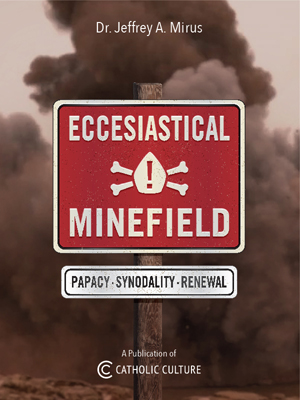Catholic Recipe: Springerle I
Springerle, the most beautiful and probably the most rare of all Christmas cookies, belong to the Pennsylvania Dutch country no less than to Central Europe. Generations ago, when the ancestors of the Pennsylvania Dutch emigrated from the Palatinate, they brought with them their wooden springerle boards and cherished family recipes. The molds have handles and are marked off in squares, each carved with a charming intaglio motif. The boards-when pressed into the unbaked dough-make exquisite cameos, creamy in color and distinctive in design. Nowadays there are many good American imitations of the traditional boards that formerly came from Germany and Switzerland. There are beautifully carved rolling pins, as well. But the pins, although highly decorative articles of kitchen furnishing, are tricky for the amateur cook.
We are not sure how the name springerle originated. But according to one ingenious explanation, the squares on the mold suggest the pattern of a chess board. Springer is the German noun for the knight in a game of chess, and as a verb it means "to leap," or "jump." So, however fanciful the theory may be, it is pleasant to imagine the springerle board as related to the pastime of kings.
The designs framed within the small squares are masterpieces of the early wood carver's humor and craftmanship. There are flying birds and castles with turrets; wise old owls and horse's heads; cherries plump enough to bite, and deer as fleet as the leaping dogs. Then there are ducks, rabbits, and cats with tails curled neatly about their feet. And of course there are roses, thistles, and bunches of grapes. There is no end in short, to the imaginative and amusing motifs old time craftsmen lavished upon their precious springerle boards. We hope their wives rewarded them handsomely with extra batches of their favorite cookie!
Were the sculptured cookies simply beautiful to look at they would scarcely justify the time and care required to make them. But fortunately, springerle are "wonderful good" as the Pennsylvania Dutch say. The subtly blended flavor of anise and lemon peel is difficult to match. If you make the small cake dry and hard, as is traditional, and dunk it in coffeealso traditional-you have a Christmas breakfast treat the family will remember from one year to the next. For those who scorn dunking and prefer their springerle soft and tender within, a teaspoon of lemon juice and eight tablespoons of melted butter may be added to the other ingredients.
Springerle store well and ship well, too, if you want to pack them in tins of Pennsylvania Dutch design and send as gifts to relatives or friends. Springerle are the ideal Christmas cookie. They taste as good as they look and probably are as "early American" as any cookie you can make.
DIRECTIONS
Beat eggs until light and lemon colored and add sugar, a little at a time, beating thoroughly after each addition. Beat the mixture all together about 15 minutes. Add rind, and flour, sifted with salt and baking powder. Mix well, add anise extract and chill 1 hour in refrigerator. Roll out dough 1/2 inch thick on board sprinkled with powdered sugar. Press dough lightly with springerle board, or roll through it with floured springerle pin. Let dough stand 12-24 hours to set the designs. Grease cookie sheets and sprinkle with anise seed. Cut cookies apart and arrange on pans. Bake in moderate oven (350? F.) about 30 minutes. Cookies must not be allowed to brown. When done they should be pale yellow.
Store springerle in covered tins for a week to ten days before using. A piece of apple placed in the container the day before serving keeps the cookies moist. Omit apple if hard cookie is desired. Substitute a teaspoon of almond or vanilla extract for the anise and lemon peel flavorings, if preferred.
Recipe Source: Feast-Day Cakes from Many Lands by Dorothy Gladys Spicer, Holt, Rinehart and Winston, 1960





